The link between music and personal memories
The link between music and personal memories is something I feel in my bones whenever a song drops me back in time. A lyric, a chord, or a tone can act like a small time machine—sudden, bright, and oddly familiar. I’ll explain the brain parts involved in plain words, share simple steps and playlists I use to cue memories, and offer quick tests to watch memories return.
Key takeaway
- A single song can pull up a clear scene—faces, smells, emotions.
- Music can change your mood in an instant: comfort, joy, or ache.
- Playlists, scents, and places can anchor memories reliably.
- Careful, gentle use of familiar songs helps people with memory loss.
- The link between music and personal memories is both emotional and neurological.
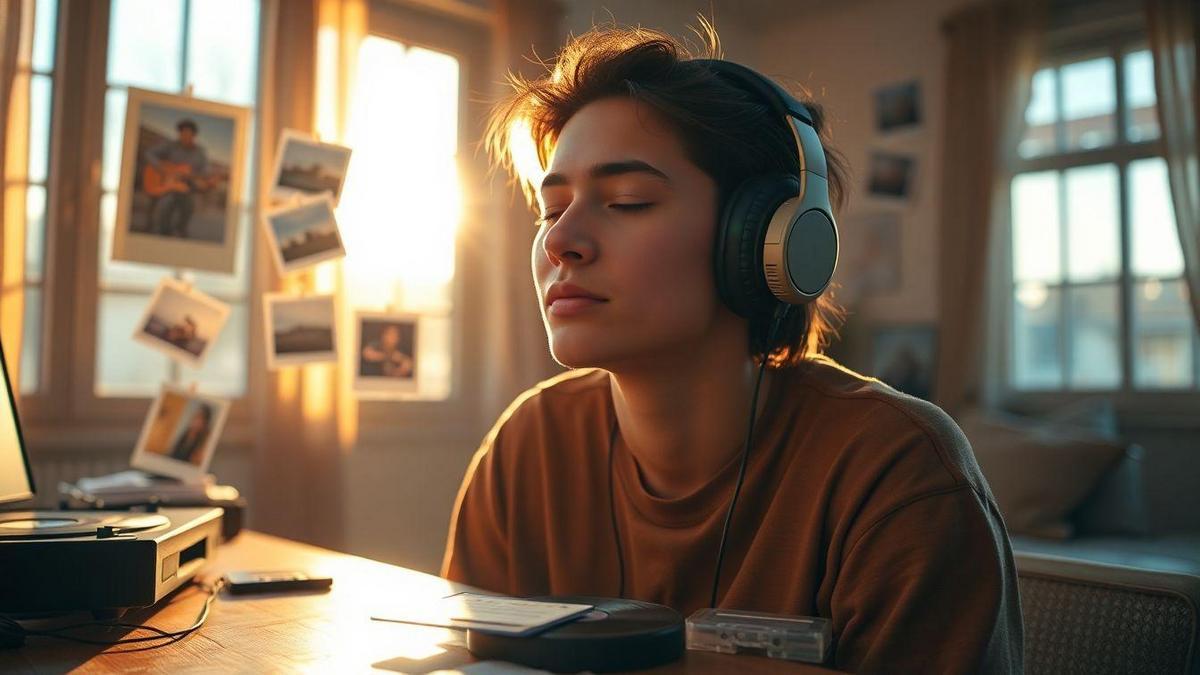
How I notice music‑induced nostalgia
I notice nostalgia when a song makes my chest tighten and my day shift color. That feeling is quick and unmistakable—a small time machine. The link between music and personal memories shows itself when a melody opens a door to a moment I thought was gone. Sometimes it’s the way a tune gives you goosebumps; understanding why can help you use those moments intentionally (why some songs give us goosebumps).
How songs bring back old feelings
A verse, drumbeat, or guitar lick can pull up an entire scene because music ties to sensory and emotional cues:
- Trigger words in lyrics that match a past conversation.
- A rhythm linked to a dance or a drive.
- A singer’s tone that matches the mood I felt then.
- A place, object, or smell that was present when the song played.
Example: crossing a bridge and hearing a high‑school song—sudden visualization of paint on my shirt, a winter chill, an awkward grin. The song didn’t just remind me—it re‑created the feeling. Elements like melody and harmony do much of that work—melodies sit on scales and simple patterns that are easy to hum back (scales explained in plain English), and chords shape the emotional color (what chords are and why they matter).
Why emotion and memory make that return possible
Emotion frames memory. When something strong happened—joy, loss, crush‑level panic—the brain stamps the feeling to the music playing then. Later, the same tune tugs on that stamp. Music tends to bind sound with sight, smell, and touch; one cue can pull the whole set. If you want to make a musical line feel alive, there are simple ways to add emotional weight to a note or phrase (how to add emotion to every note).
Song element mapping:
| Song element | What it often brings back |
|---|---|
| Melody | Overall mood (calm, joy, sadness) |
| Lyrics | Specific lines, people, or events |
| Tempo | Energy level—rush or slow reflection |
| Instrument tone | Place, era, or a person’s voice |
Simple steps I use to let nostalgia arrive
- Pick a quiet moment and a familiar song.
- Sit or walk slowly; minimize distractions.
- Notice the first image or feeling that appears.
- Name it aloud: This is ___. Naming calms the rush.
- Stay with the memory for 30–60 seconds, then ground yourself (feel your feet, play a neutral song).
These short, repeatable sessions work well if they’re part of a small routine—building them into daily life is easier with a simple plan (how to create a simple daily routine) and even twenty focused minutes can change how consistent you are (the power of just twenty minutes daily).
Quick checks to tell nostalgia from pleasant recall:
- You smile or tear up with no clear reason.
- Time seems to fold—you feel back in that moment.
- The memory carries sensory detail (smell, touch, light).
What I learned about brain links in plain words
When a song brings back a memory, different brain parts team up like a band:
- Auditory cortex: hears the tune.
- Hippocampus: stores the episode.
- Amygdala: adds emotion.
- Prefrontal cortex: searches and retrieves.
- Basal ganglia & cerebellum: rhythm, learned movements.
I picture it as: hear it → find the scene → feel it → pull it up → move to it. That chain explains why one chorus can bring smell, color, and a face back. For a readable overview of how music engages emotion and memory, see How music affects mood and memory.
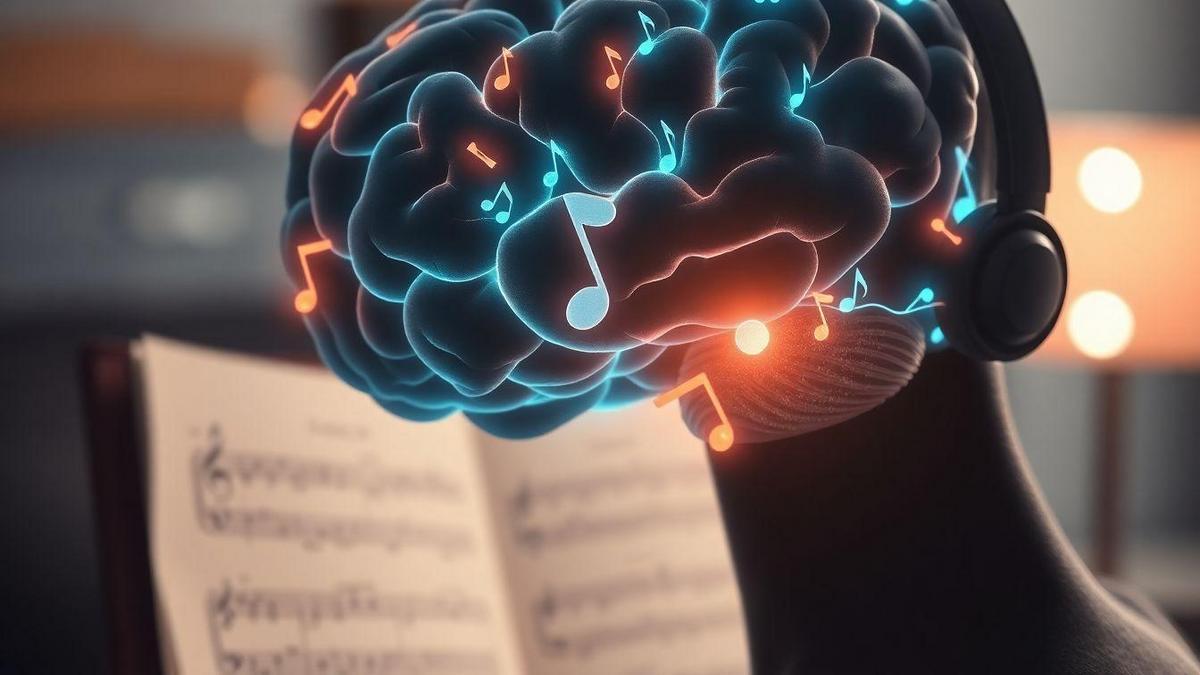
How lyrics act as memory cues
I listen to lyrics like a detective. A single line can return me to a kitchen, a rainy night, or a car. Words act like anchors: emotional moments make lyrics stick, and concrete details (names, places, actions) hold better than vague lines.
Why lyrics work:
- Emotion grabs the words first.
- Concrete details are easier to recall.
- Repetition and rhyme make lines easier to retrieve.
Quick test to see which lyrics stick:
- Pick a song you haven’t played in a while.
- Listen once, eyes closed. Note any image or feeling.
- Write down the exact lyric that triggered it.
- Later, read the lyric alone—see if the image returns.
- Rate vividness 1–5; 4–5 means a strong cue.
If you enjoy creating lines that stick, basic songwriting ideas and music theory don’t need to be intimidating—there are plain guides that make starting easier (is music theory really that scary?).
Recreating context to boost recall
I use music like a time machine: playing a song in the right place, scent, or hour makes memories pop like film clips. This taps into context-dependent memory; learn more about How context-dependent memory helps recall. Sound ties strongly to context—street corners, smells, time of day, and objects can glue a tune to a memory. This contextual approach overlaps with therapeutic uses of music and why simple musical activities can clear the mind or open memories (music as therapy and how playing clears the mind).
How I set up context:
- Pick a song tied to a memory (2–3 max).
- Choose one consistent cue: place, scent, or time of day.
- Play the song only in that cue repeatedly for a short period.
- Say aloud how you felt when it happened.
- Keep sessions short (10–15 minutes) and test later in a new setting.
Simple room setup:
- A small corner as your memory spot.
- Soft lamp lighting and one scent (candle/diffuser).
- A short playlist (under 10 minutes) with 1–2 target songs.
- One object from the memory (ticket, scarf, photo).
- Sit, breathe, play, and name one feeling out loud.

Using playlists as audio cue collections
I treat playlists like photo albums for the ears. I pick songs that act as audio cues so a moment zips back the minute I press play. If a track plays across similar nights, it becomes a signature. I add a short note to the playlist (date, place, person) so it becomes a living map. Making the process enjoyable keeps you coming back—playlists can be part of making practice and memory work feel less like a chore (making practice fun instead of a chore).
How I choose songs:
- Pick tracks that triggered a strong first reaction (laugh, chill, tear).
- Favor songs tied to an action (a drive, cooking together).
- Include one unexpected track—odd choices often stick.
- Label playlists clearly (Name Date / Mood Place).
Three‑step playlist plan:
- Select 3–7 songs tied to one event or person.
- Test in the original context and in a new place; watch the first memory.
- Lock: name the playlist, add a note, revisit after a week.
Music, nostalgia, and older adults
I’ve seen a single verse pull a name, a face, a laugh into a room that felt empty. Familiar songs reach emotional circuits that often survive other losses. Rhythm and melody are simple hooks; emotional memory is stored differently and can remain accessible even when facts fade. This is one reason caregivers and therapists use songs in short, guided sessions (music as therapy). The Alzheimer’s Association offers practical guidance on Using music safely with people with dementia.
Safe tips for caregivers:
- Start with one familiar song at low volume.
- Watch for distress; stop if the person becomes upset.
- Ask gentle prompts: Does this remind you of…?
- Keep sessions 5–15 minutes and record positive responses.
Small daily habits:
- Morning playlist during breakfast.
- Sing a chorus while doing simple tasks.
- Pair a photo with a song on a tablet.
- Use short songs for routines (toothbrushing, dressing).
- Keep a notebook of songs that spark smiles.
If you want to add an instrument into the routine, choose something simple and affordable—there are great starter options that are easy to learn and gentle for older hands (affordable instruments for beginners).
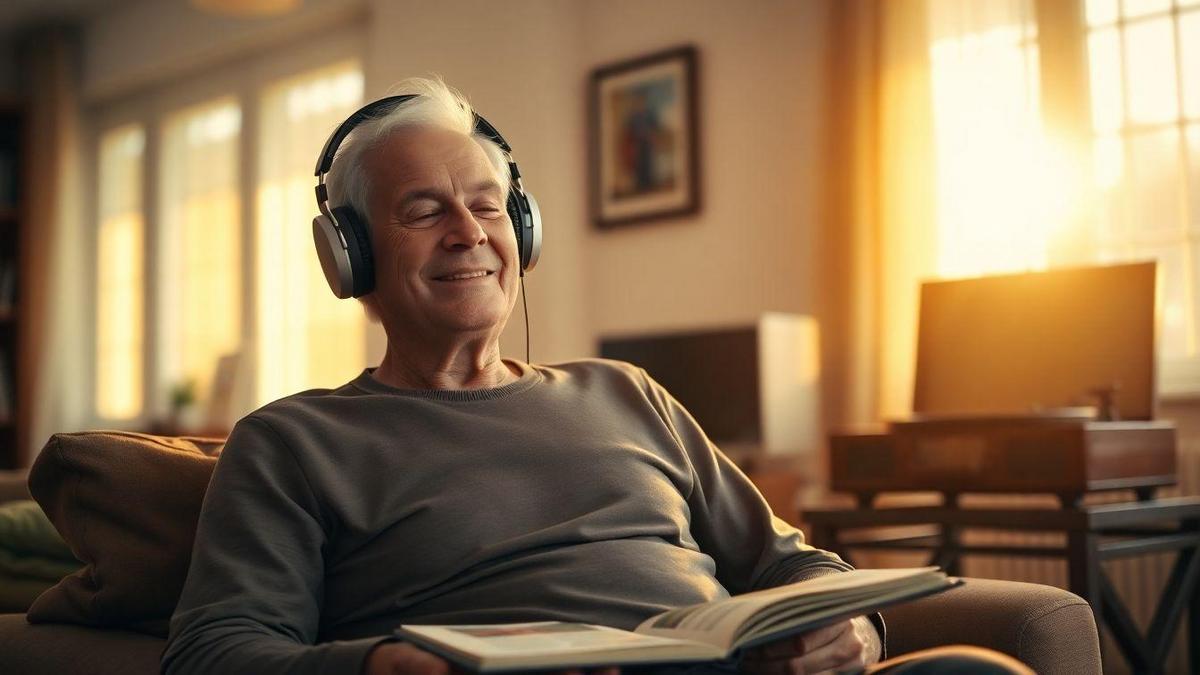
Composing, improvising, and storing moments
Writing tiny songs about my day made music feel personal and useful. Composing creates time capsules: a line repeated in a chorus becomes an anchor that brings a scene back. You don’t need complex theory—simple chord progressions and a short melody do the job (basic chord ideas), and basic notation or chord charts can help you store the idea (how to read chords and sheet music).
Why songwriting helps recall:
- Melody makes lines easier to find later.
- Repetition turns phrases into triggers.
- Emotional writing files memories more strongly than notes alone.
- Specific sensory words (smell, taste, touch) bring scenes alive.
A short songwriting prompt:
- Pick one moment.
- Name one clear image (place, object, sound).
- Write one short line including that image.
- Add an easy three‑note melody and repeat the line in a chorus.
- Sing it once—store the moment.
If you struggle to start, there are friendly guides to make theory and songwriting approachable for beginners (making songwriting less scary).
Simple tests I use to track change
I run short checks to see how music reshapes memory over time:
- Play a 20–30 second clip.
- Ask: What moment does this bring up?
- Record three quick ratings (1–5): Vividness, Emotion, Confidence.
- Time the reaction in seconds and note one sentence describing the memory.
- Repeat weeks or months later to see change.
These quick measures show whether a cue is strengthening (vividness up, reaction time down). Keeping a short, regular routine helps—if practice or follow‑through is a hurdle, simple anti‑procrastination approaches and short daily blocks make tracking easier (how to stop procrastinating, twenty‑minute practice).
The science in brief
Scans and studies show consistent patterns:
- Familiar songs light up auditory cortex and hippocampus.
- Emotional music activates the amygdala more than neutral music.
- People with hippocampal damage can sometimes hum tunes but lose episodic detail—showing melody and episodic memory rely partly on different systems.
- Music can trigger memories in dementia because rhythm and melody access preserved circuits.
These findings explain the neurological side of the link between music and personal memories. For an accessible summary of research, see Overview of music and memory research. For a deeper look at how emotional responses form and why some moments feel stronger, see the discussion on why music gives us goosebumps (why some songs give us goosebumps).
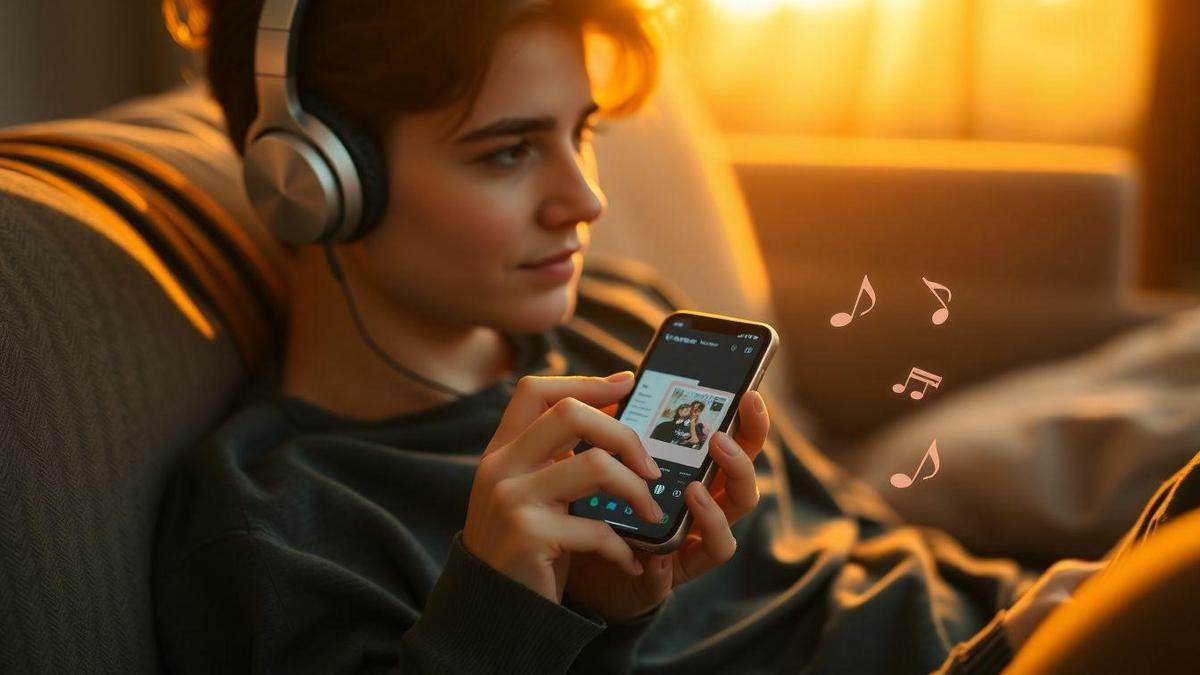
Conclusion
Music is more than sound—it’s a time machine. The link between music and personal memories happens when melody, lyrics, and emotion weave together to make a tune into a key. Simple rituals—a quiet minute, a familiar song, a named feeling—often unlock scenes that feel real again.
Whether you’re using playlists to capture a period, a scent to strengthen a cue, or a gentle chorus to reach someone with memory loss, the approach is the same: be patient, keep sessions short, and follow the person’s cues. Nostalgia can cheer or sting; both are part of what music returns.
Try one small test today: one song, one image, one breath. If you want more ideas, you can read more at https://clickneutro.com.
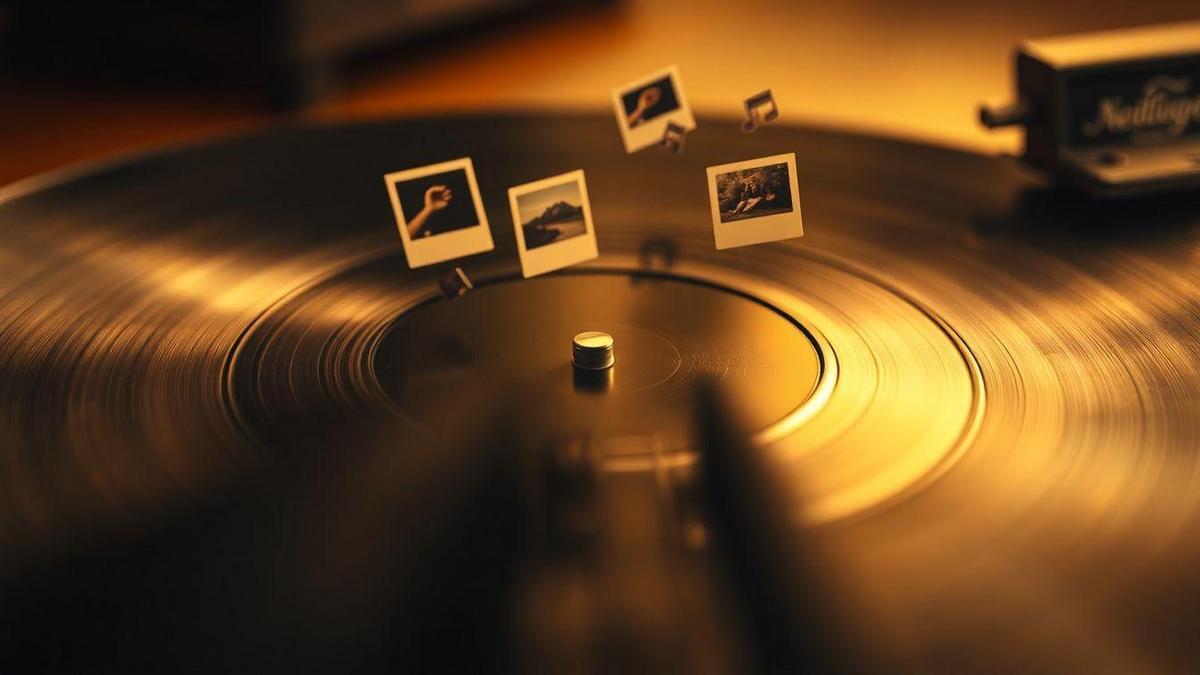
2 comentários em “The link between music and personal memories”